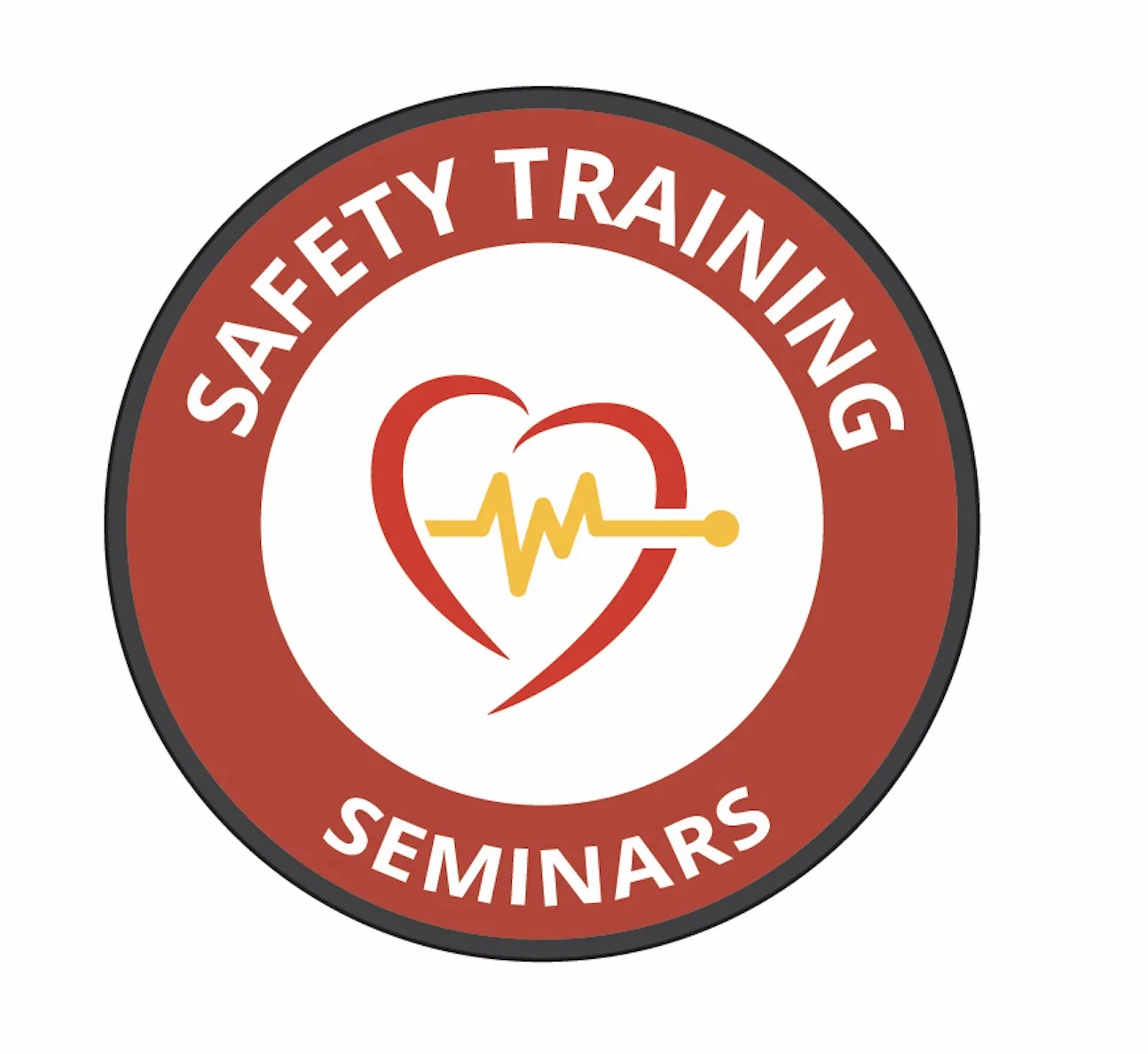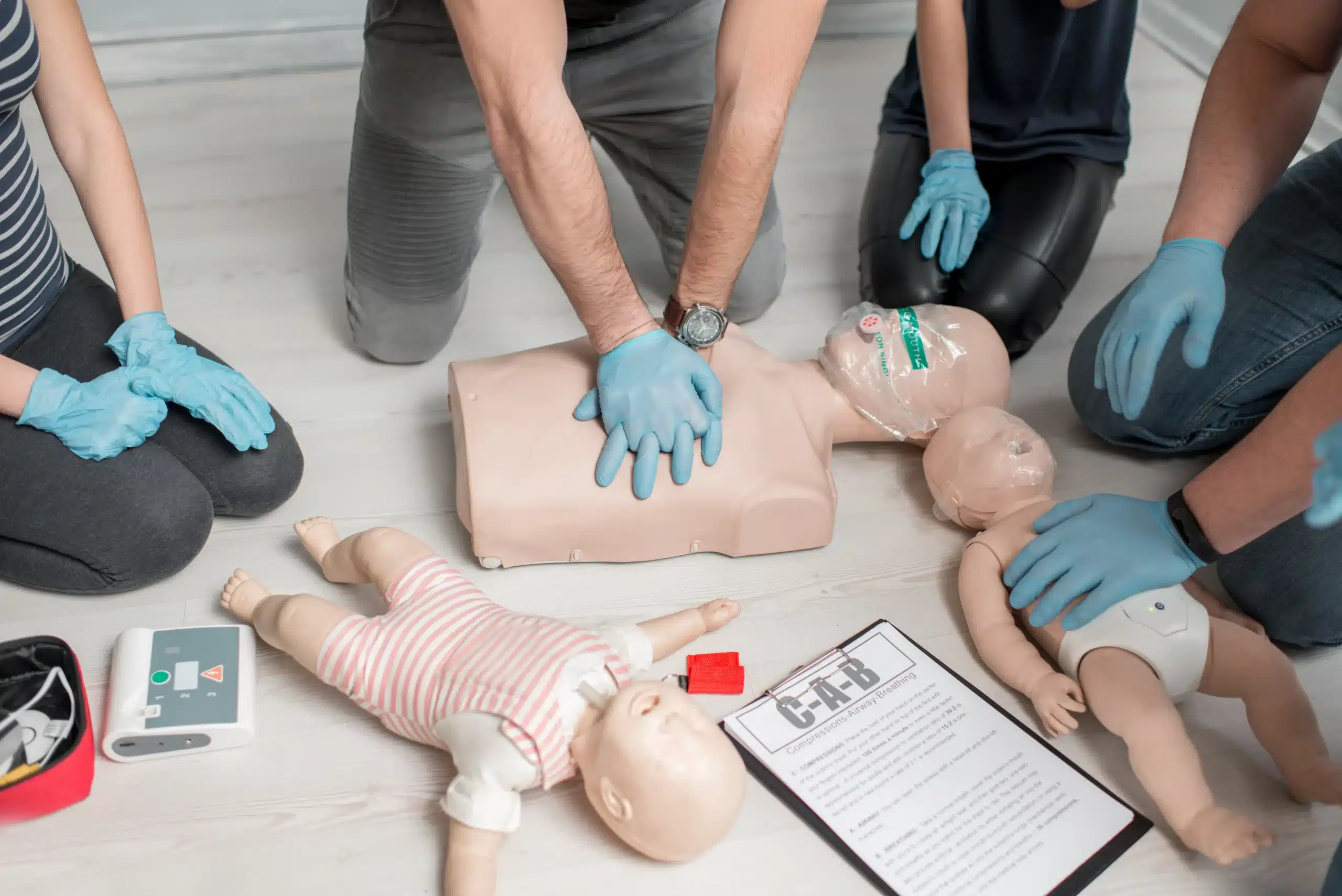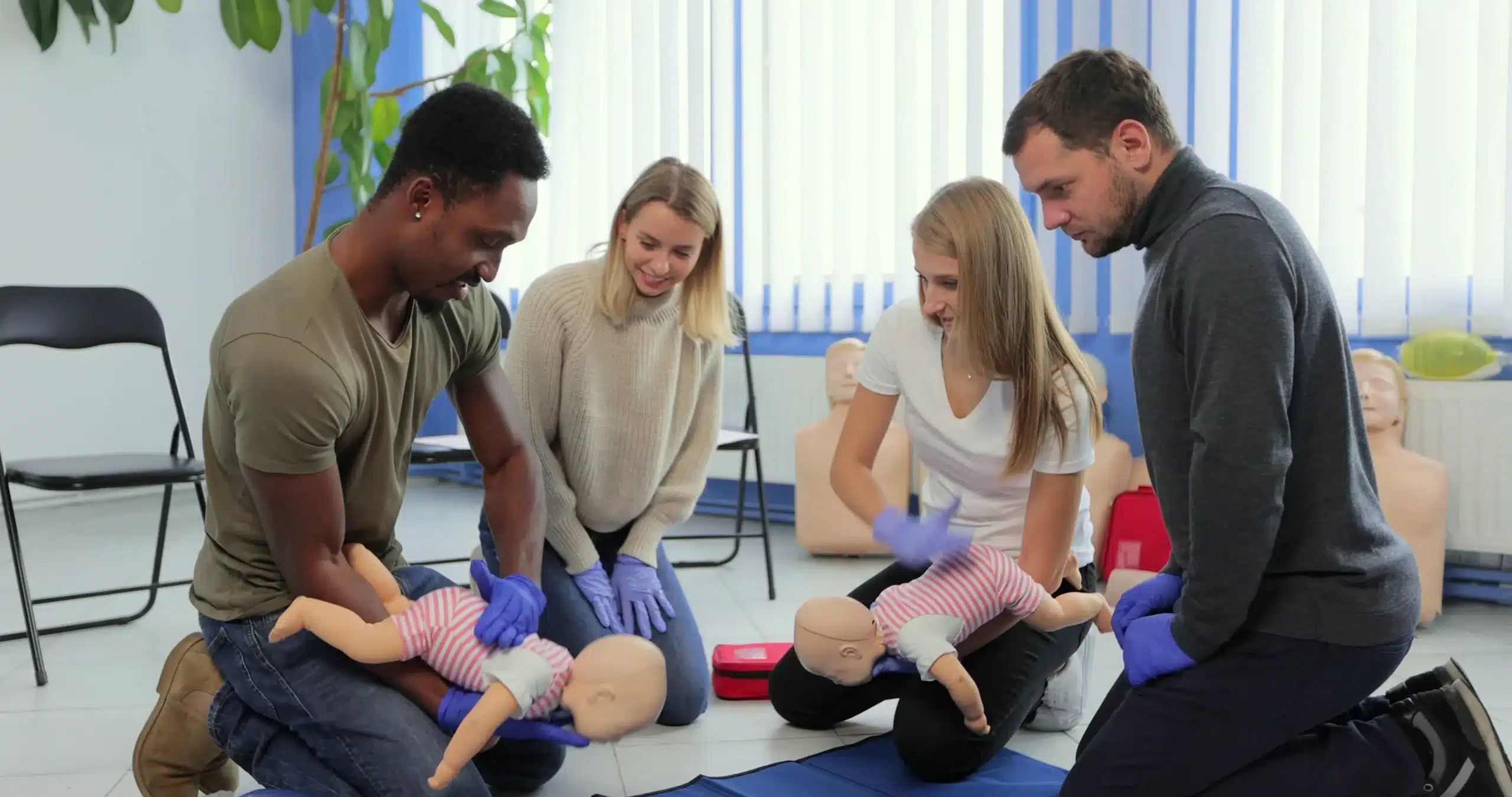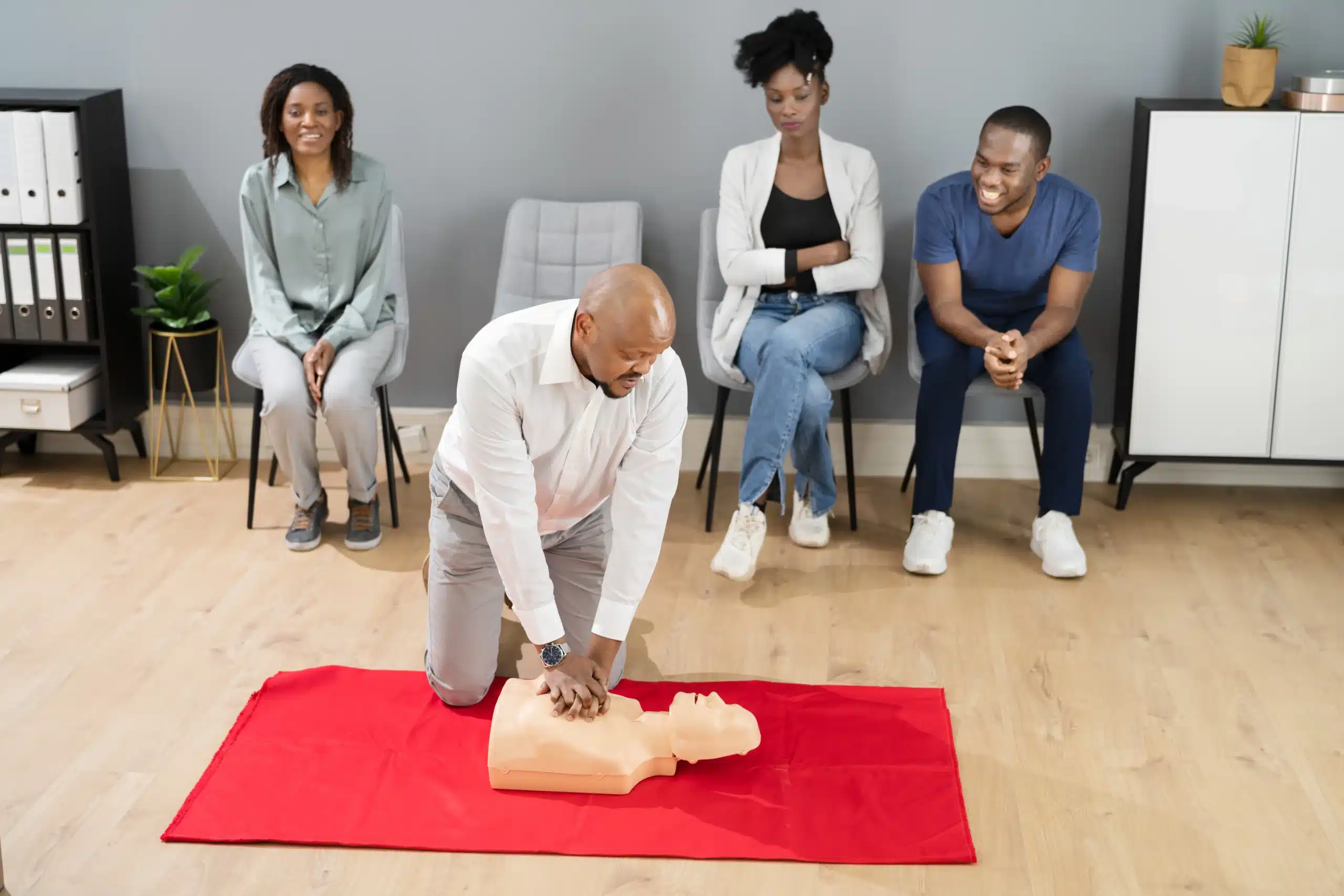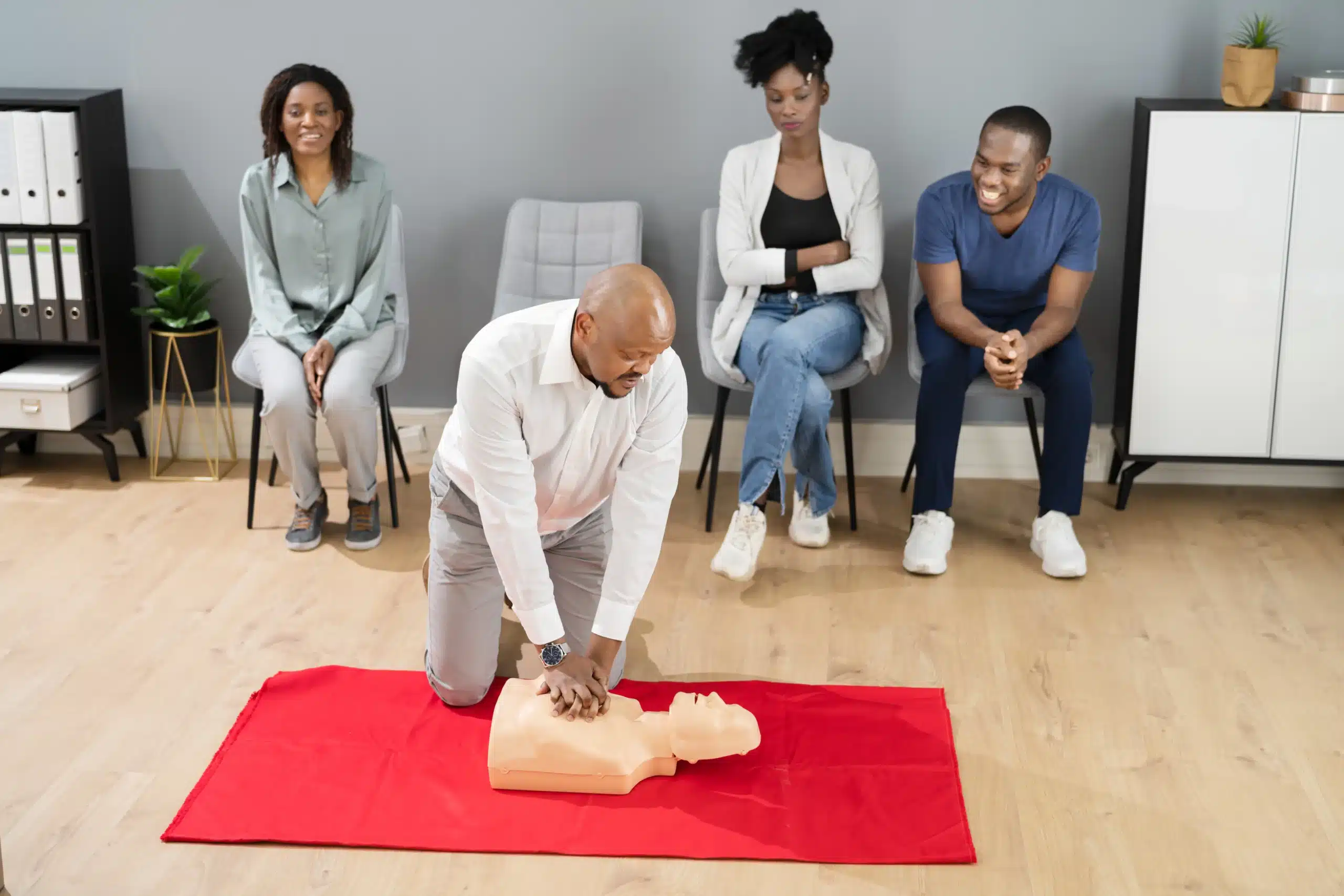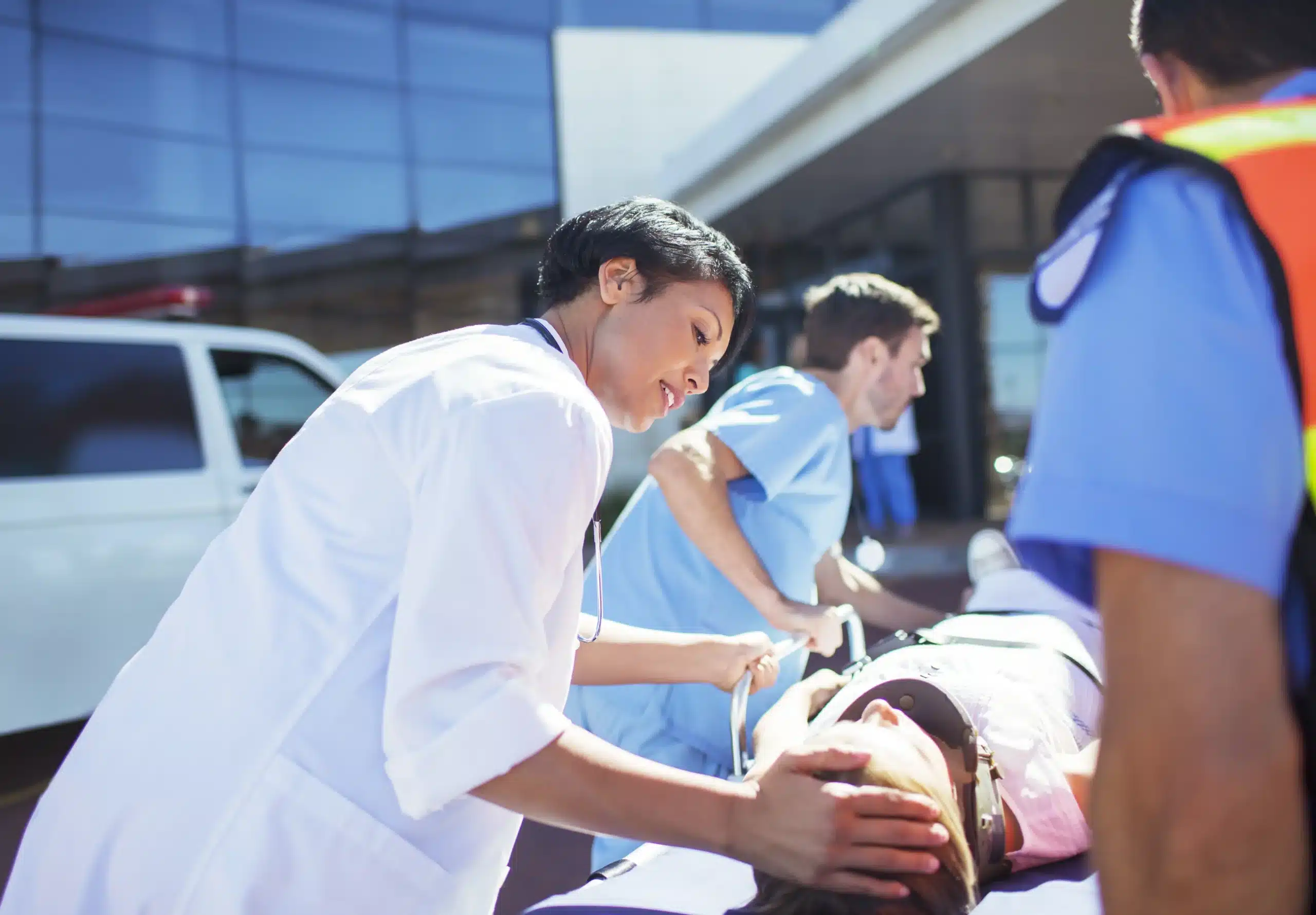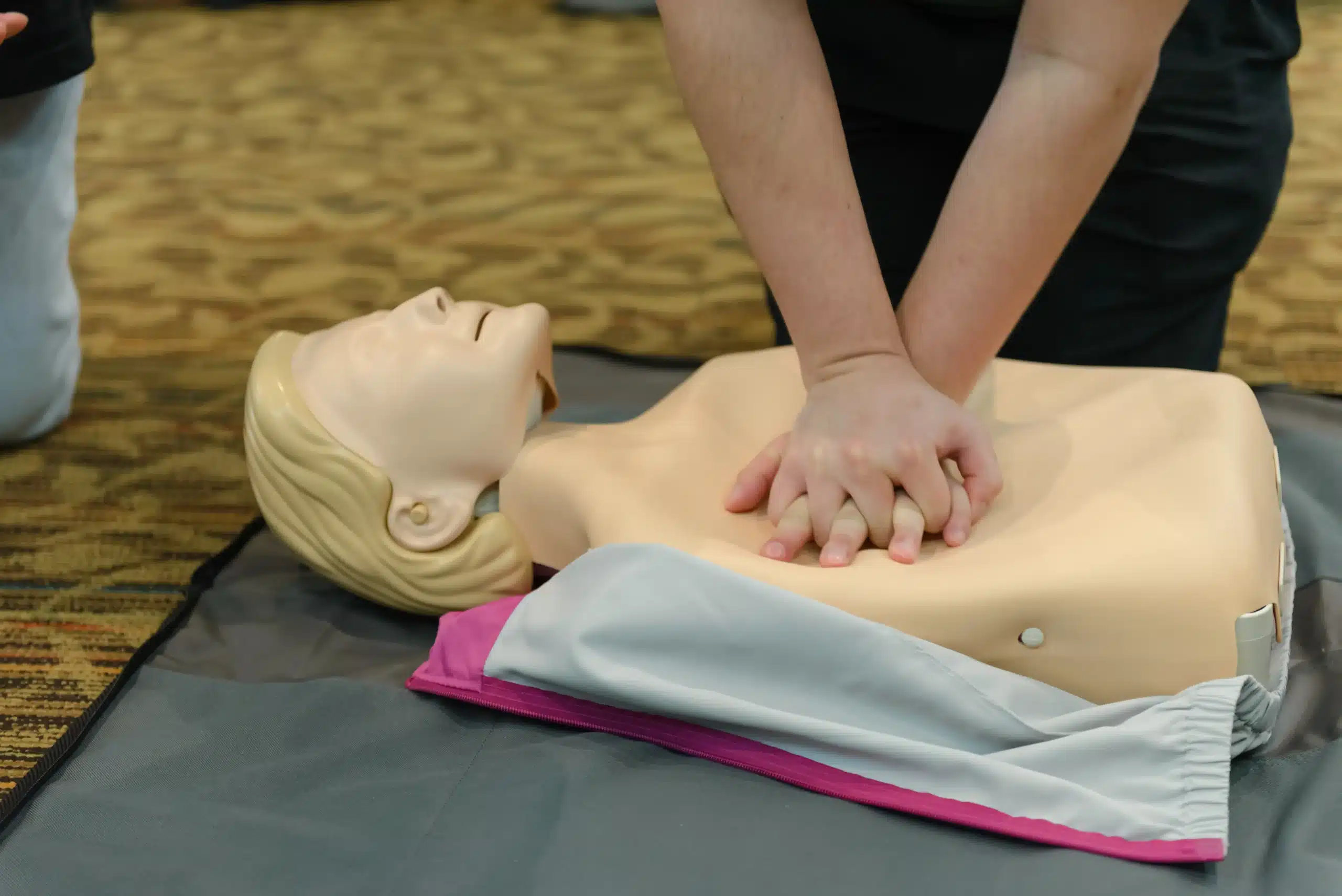Emergencies can happen anytime, anywhere. Being prepared isn’t about living in fear; it’s about having the confidence to act when it matters most. This guide focuses on finding cpr classes in SF, providing a clear path to acquiring this essential life skill. We’ll cover the various types of CPR training available, discuss reputable training providers in the San Francisco area, and debunk common myths that often prevent people from seeking CPR certification. Take the first step towards becoming a more prepared and confident individual.
Key Takeaways
- CPR skills are for everyone and can save lives: Learning CPR, whether you’re a healthcare provider or a community member, equips you to respond confidently during emergencies. Find a class that suits your needs.
- Finding the right CPR class means considering your schedule, budget, and learning style: Explore different providers, compare costs, and look for flexible scheduling options to make training convenient.
- Overcoming common CPR concerns is easier than you think: Don’t let worries about difficulty or causing harm hold you back. CPR training is designed to be manageable, and the potential to save a life makes it invaluable.
Why CPR Matters
Knowing CPR can make a real difference in a crisis. Studies show that learning CPR can double the survival rate of someone experiencing cardiac arrest outside of a hospital. Effective bystander CPR can double or even triple a victim’s chances of survival before professional help arrives. That’s why CPR isn’t just for healthcare professionals; it’s a life-saving skill everyone should learn—parents, caregivers, teachers, and community members alike. Equipping yourself with this knowledge means you can act quickly and confidently in emergencies, potentially saving a life. Thankfully, proper CPR training is readily available, making it easier than ever to develop these essential skills. With the right training, you can provide immediate care until emergency services arrive. If you’re in San Francisco, you have many options for CPR certification, ensuring our community is ready to respond when it matters most.
Find CPR Classes in San Francisco
Finding the right CPR class can feel overwhelming, but several excellent resources are available throughout the city. Here’s a rundown of some reputable providers to help you get started:
Bay Area CPR
Bay Area CPR offers a range of CPR certification courses, including BLS, ACLS, PALS, and Wilderness First Aid. They prioritize flexible scheduling and convenient locations across the Bay Area, making it easier for busy professionals and residents to fit training into their schedules. This focus on accessibility makes them a solid choice for those juggling work, family, or other commitments. You can explore their CPR class options to find the best fit.
American Red Cross
The American Red Cross is a well-known provider of CPR and First Aid training in San Francisco. Backed by their Scientific Advisory Council, their courses adhere to nationally recognized standards. The Red Cross is a reliable option if you’re looking for a familiar and trusted organization. Learn more about their course offerings in San Francisco.
American Heart Association
Several organizations in San Francisco offer training based on American Heart Association guidelines. For example, Heart Start CPR provides AHA-certified BLS Provider and Renewal courses, which meet California Emergency Medical Services Authority (EMSA) requirements. Choosing an AHA-aligned course ensures your certification is widely accepted. You can find more information on AHA CPR classes in San Francisco.
Revive CPR
Revive CPR offers AHA-certified CPR, BLS, and First Aid classes in San Francisco, with a focus on efficiency and affordability. They emphasize same-day certification and competitive pricing, making them a practical choice for those on a budget or tight deadline. Explore Revive CPR’s classes to see if they meet your needs.
Safety Training Seminars
Safety Training Seminars provides a comprehensive selection of AHA-certified courses, from basic CPR to advanced training like BLS, ACLS, and PALS. They are known for competitive pricing within the Bay Area, making them a good option for those seeking a broader range of certifications. Learn more about Safety Training Seminars and their available courses.
Understand CPR Class Types
Knowing which CPR class is right for you depends on your individual needs and goals. From the basics for adults, children, and infants to specialized certifications for healthcare providers, there’s a course designed to equip you with the skills to make a difference.
Adult, Child, and Infant CPR
Basic CPR classes teach you the fundamentals of cardiopulmonary resuscitation for people of all ages. These courses cover essential techniques like chest compressions, rescue breaths, and how to recognize the signs of a cardiac arrest. Safety Training Seminars offers American Heart Association-certified courses in San Francisco, preparing you to respond confidently in emergencies. The American Red Cross also provides CPR and First Aid training for various age groups.
BLS, ACLS, and PALS for Healthcare Professionals
Healthcare professionals often require more advanced certifications. BLS (Basic Life Support) provides a foundation for responding to respiratory and cardiac emergencies. Bay Area CPR offers a range of American Heart Association-certified courses, including BLS. ACLS (Advanced Cardiovascular Life Support) focuses on advanced interventions for adult patients, while PALS (Pediatric Advanced Life Support) addresses the specific needs of children. These certifications are crucial for healthcare providers working in critical care settings.
First Aid and AED Training
Many CPR courses also incorporate First Aid and AED (Automated External Defibrillator) training. Learning basic First Aid can help you manage injuries and other medical emergencies. AED training teaches you how to use this life-saving device. Safety Training Seminars offers courses that include both First Aid and AED instruction, providing a well-rounded approach to emergency preparedness.
Essential CPR Skills
It’s important to remember that CPR skills can fade over time. The American Red Cross emphasizes the importance of regular practice and refresher courses to maintain proficiency. Staying up-to-date on the latest guidelines and techniques ensures you can respond effectively when it matters most. Consider regular practice sessions and refresher courses to keep your skills sharp.
Get Certified and Recertified
Getting CPR certified or recertified is a straightforward process. Various providers offer courses to fit different schedules and budgets. Safety Training Seminars offers a range of CPR certification courses, making it easy to find one that meets your needs. Remember to check the certification expiration date and plan for recertification accordingly. This ensures your credentials remain current and you’re always prepared to help.
Choose the Right CPR Class
Finding the right CPR class means thinking about a few things to make sure it works for your schedule, budget, and learning style. Let’s break down the key points to help you choose wisely.
Costs and Discounts
CPR class costs in San Francisco depend on the course, the organization, and any available discounts. Check with different providers like Safety Training Seminars, a long-time provider of CPR training in Northern California, to compare prices and find deals.
Free and Low-Cost Options
If cost is a big factor, look into free or low-cost CPR training. Groups like the American Red Cross and Heart Start CPR often offer comprehensive CPR classes, sometimes bundled with First Aid training.
Class Length and Schedules
CPR classes have different formats and lengths. Some places, like Safety Training Seminars, offer a variety of American Heart Association-certified courses, from the basics to more advanced skills. Think about your schedule and how much training you need when picking a class. Look for providers with flexible times.
Instructor Qualifications and Class Size
Good instructors make a big difference in how much you learn. Ask about the instructor’s background and experience. The American Red Cross, for instance, uses its Scientific Advisory Council to develop its courses, ensuring high-quality training. Class size matters too. Smaller classes usually mean more individual attention.
Practice CPR Hands-On
Good CPR training means hands-on practice. Make sure the class lets you practice on CPR training mannequins. This helps you build the muscle memory and confidence you need for a real emergency, as explained by Emergency First Response.
Online and Blended Learning
Online and blended learning offer flexibility, but they have limits. Online-only CPR training might not give you the same hands-on practice as in-person classes. If you choose online or blended learning, make sure it includes a hands-on part. Safety Training Seminars offers a low-price guarantee for in-person training. Keep in mind that online-only training might not fully prepare you for real-life situations, as noted by the Australian Training Institute. Blended learning, mixing online and in-person, can be a good compromise.
Address CPR Concerns
It’s normal to have a few hesitations about learning CPR. Let’s clear up some common misconceptions so you can feel confident signing up for a class.
“Only Healthcare Professionals Need CPR”
One of the biggest myths about CPR training is that it’s only for doctors and nurses. The truth is, anyone can learn CPR—and everyone should. Quality CPR training empowers you to respond effectively in emergencies, regardless of your background. Think of it as essential life knowledge, much like knowing how to change a tire or cook a basic meal.
“CPR is Too Hard”
Many people worry that CPR is too complicated to learn. Some hesitate, concerned about performing it incorrectly or causing unintended harm. But modern CPR training simplifies the process, breaking it down into easy-to-understand steps. Bay Area CPR offers classes designed to build your confidence and equip you with the skills to act quickly and effectively.
“CPR Can Cause Harm”
Another common concern is the fear of injuring someone while performing CPR. While there’s always a small risk, the potential for saving a life significantly outweighs it. Inaction during a cardiac arrest is far more dangerous than attempting CPR. Remember, CPR classes teach you how to minimize risks and provide assistance safely. Check out these resources on common CPR myths to ease any worries.
“Mouth-to-Mouth is Always Necessary”
The idea of mouth-to-mouth resuscitation can make some people uncomfortable. However, current American Heart Association (AHA) guidelines prioritize chest compressions. Hands-only CPR is often sufficient and highly effective. Your CPR instructor will explain the appropriate techniques and when rescue breaths might be necessary.
Resources After Training
Learning CPR is an ongoing process. After your initial CPR certification, look for opportunities to refresh your skills and stay up-to-date with the latest guidelines. Consider joining refresher courses or exploring online resources like CPR Guardians to maintain your confidence and preparedness. This will help you build your skillset and stay informed about CPR best practices.
Frequently Asked Questions
What if I’m nervous about performing CPR in a real emergency? It’s completely normal to feel apprehensive about using CPR in a high-pressure situation. Remember, any attempt at CPR is better than none. Focus on what you’ve learned in your training, and trust your instincts. Regular practice and refresher courses can also help build your confidence.
How do I choose the right CPR class for me in San Francisco? Consider your schedule, budget, and learning style. Look at what different providers offer, compare costs, and check if there are discounts. Think about class size and instructor experience, too. Hands-on practice is essential, so make sure the class includes that.
Is online CPR certification enough, or do I need an in-person class? While online courses offer flexibility, they often lack the crucial hands-on practice component. Blended learning (combining online and in-person training) can be a good compromise. For the most comprehensive training, an in-person class is generally recommended.
How often do I need to renew my CPR certification? CPR guidelines and best practices can change, so renewing your certification every two years is typically recommended to stay current. Check with your certifying organization for specific requirements.
What if I can’t afford a CPR class? Several organizations offer free or low-cost CPR training options. Check with local community centers, hospitals, or organizations like the American Red Cross for potential opportunities. Don’t let cost be a barrier to learning this valuable skill.
